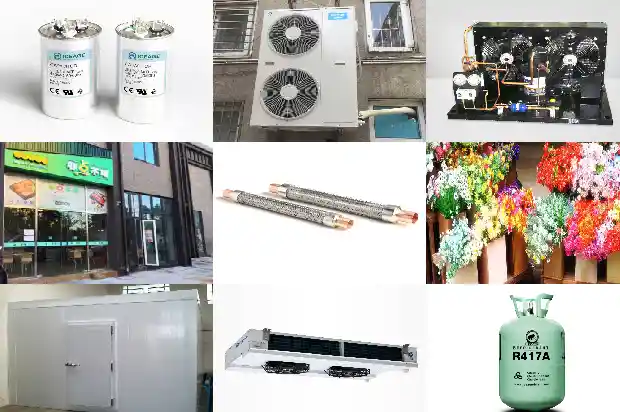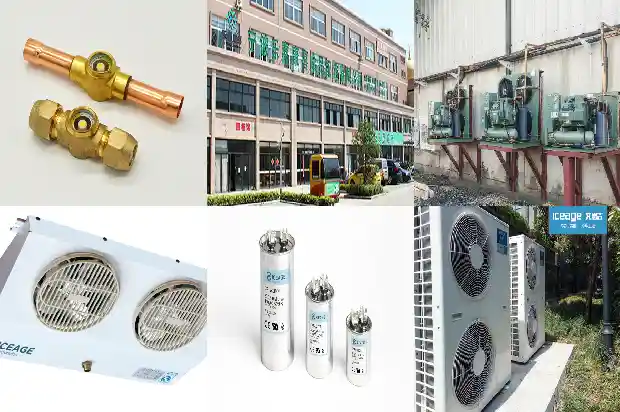Liquid Level Detection and Control of Flooded Evaporators
2024-12-31
After the water - cooled screw chiller adopts a flooded evaporator, the energy efficiency ratio of the unit can be significantly improved. However, this improvement must be based on excellent design and manufacturing as well as appropriate operation control strategies. One of the very important points is to accurately detect and control the liquid level of the evaporator. Otherwise, not only will the excellent heat transfer performance of the flooded evaporator not be exerted, but also the safe operation of the unit will become a problem. This is quite different from the dry - type evaporator units with thermal expansion valve for liquid supply, which domestic manufacturers were familiar with in the past, and it is not easy to solve.
Analysis of commonly used detection and control technologies at present:
The liquid - level detection and control of the flooded evaporator includes two links: refrigerant flow control and liquid - level detection. There are various technical options, each with its own characteristics, which are described as follows.
The liquid - level detection and control of the flooded evaporator includes two links: refrigerant flow control and liquid - level detection. There are various technical options, each with its own characteristics, which are described as follows.
- Refrigerant flow control:
1.1 Electronic expansion valve
The electronic expansion valve needs to receive electronic signals and be driven by electricity to work. Currently, there are mainly three driving methods, namely, electric motor drive, stepping motor drive, and electromagnetic force drive. If the algorithm or logic is appropriate, the electronic expansion valve can achieve more complex control laws under the control of a microprocessor and obtain higher control quality. This, in turn, depends on an accurate understanding of the dynamic characteristics of the controlled object. For large - capacity refrigeration and air - conditioning systems with large lag and nonlinearity, this is often not easy. Moreover, currently, large - capacity electronic expansion valves are all imported products with relatively high prices, which restricts their wide application.
1.
2 float valve
This is a mechanically - acting regulating valve with a relatively simple structure. After adjustment, it can work independently without complex control rules. However, it can only achieve two - position control with low accuracy, and it requires a high degree of cleanliness in the refrigeration system. Otherwise, it is prone to failure. Compared with the electronic expansion valve, the float valve also has no price advantage.
1.3 orifice plate
The orifice plate with a fixed flow - port area is the simplest and cheapest method of flow regulation. However, supplementary adjustment measures, such as parallel solenoid valves, are required. Otherwise, its adjustment function cannot meet the refrigerant flow requirements. - Liquid - level detection
2.1 direct detection method
A liquid - level sensor is used to directly sense the liquid level. Currently, there are various liquid - level sensors available, such as capacitive, magnetic float, and pressure - type sensors. The sensors are installed inside the evaporator and are in direct contact with the refrigerant. Due to the two - phase mixture characteristics of the fluid in the flooded evaporator, the sensors cannot accurately detect the liquid level. Especially, if the installation is improper, the liquid level cannot be detected. There is also an optical sensor that does not need to be in direct contact with the refrigerant. However, its reliability in refrigeration devices has not been verified. Because it requires a stable and easily observable transparent window, which may be difficult to guarantee during the long service life of the chiller. Therefore, the feasibility of this method is questionable.
2.2 indirect detection method
The change in the liquid level of the flooded evaporator will affect the liquid - carrying amount in the compressor's suction, which will be reflected in the changes in the compressor's exhaust temperature and exhaust superheat. Thus, this characteristic can be used to detect and control the liquid level. However, due to different evaporator designs, different compressors, and the complex and variable operating conditions, it is very difficult to quantitatively and accurately calculate the appropriate exhaust superheat as an input parameter for control. At least, a large amount of experimental work is required for calibration. Therefore, although it is feasible, it is very troublesome.
Liquid - level detection and control method based on heat - pipe technology:
The heat - pipe is a high - efficiency heat - transfer element that uses phase - change heat - transfer. It is a closed container (usually tubular). After evacuation, an appropriate amount of working fluid is filled. The working fluid is heated and evaporated at one end, and the vapor flows to the other end, where it condenses and releases heat. The condensate can flow back to the evaporation section under the action of gravity, capillary force, etc., and this process repeats to achieve high - efficiency heat - transfer. The working mode of the heat - pipe gives it a series of advantages such as adjustable wall temperature and variable heat - flux density, and it has been applied in many fields.
Figure 1 is a schematic diagram of the principle of using heat - pipe technology to detect the liquid level of the evaporator. During normal operation, ideally, the liquid level of the evaporator is stable at a suitable position. Then, two heat - pipes can be installed at a suitable part of the evaporator. Their evaporation sections are outside the evaporator, and the condensation sections are inside the evaporator.
The principle of this method is similar to that of the thermoelectric expansion valve. The difference is that the heat - transfer from the external environment is used here to replace the electric heating in the thermoelectric expansion valve.
The heat - pipe is a high - efficiency heat - transfer element that uses phase - change heat - transfer. It is a closed container (usually tubular). After evacuation, an appropriate amount of working fluid is filled. The working fluid is heated and evaporated at one end, and the vapor flows to the other end, where it condenses and releases heat. The condensate can flow back to the evaporation section under the action of gravity, capillary force, etc., and this process repeats to achieve high - efficiency heat - transfer. The working mode of the heat - pipe gives it a series of advantages such as adjustable wall temperature and variable heat - flux density, and it has been applied in many fields.
Figure 1 is a schematic diagram of the principle of using heat - pipe technology to detect the liquid level of the evaporator. During normal operation, ideally, the liquid level of the evaporator is stable at a suitable position. Then, two heat - pipes can be installed at a suitable part of the evaporator. Their evaporation sections are outside the evaporator, and the condensation sections are inside the evaporator.


The principle of this method is similar to that of the thermoelectric expansion valve. The difference is that the heat - transfer from the external environment is used here to replace the electric heating in the thermoelectric expansion valve.
Related Articles
- Sensor for Refrigerant Leak Detection in Cold Chain Transportation
- Are you familiar with the detection and maintenance methods of air conditioner components?
- What Sensors Are Used for Leak Detection of R1234yf, the New Generation of Environmentally Friendly Refrigerant?
- Introduction to Control Valves in Refrigeration Systems
- Selection of Bypass Control Valves for Air - conditioning Water Systems
- Maintenance Strategies for the Working Cycle and Electrical Automatic Control of Chillers
- What are the Storage Conditions of Nectarine in Controlled Atmosphere Cold Storage?
- Water Flow Control Technology for Small Air-cooled Hot and Cold Water Units
- New Technology: A New Control Method for Throttle Valves in Refrigeration Systems
- Defrosting Operation Modes of Refrigeration Equipment and Its Control Components
- Automated Control of Refrigeration Systems
- Working Principle and Control Logic of Centrifugal Compressor
- Conditions for Storage of Persimmons in Controlled Atmosphere Cold Storage
- Reasons for Higher Cost of Controlled Atmosphere Cold Storage than Ordinary Cold Storage
- Technology: Dry, Flooded and Falling Film Evaporators!
- All-round Introduction to Condensers and Evaporators!
- Common Causes of Frost Build-up in refrigerant evaporators
- Why Should Refrigerant Be Filled in Liquid Form? What Are the Filling Methods?
